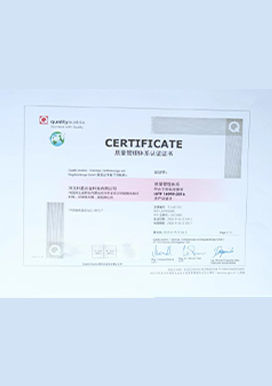- Phone:+86-17331948172 +86-0319-8862898
- E-mail: inquiry@puxingclamp.com
Aug . 16, 2024 22:39 Back to list
Finding Reliable Flat Hose Clamp Manufacturers for Quality Solutions
The Importance of Flat Hose Clamps in Various Industries
Flat hose clamps are essential components widely used in various industries for securing hoses and ensuring leak-free connections. These clamps play a critical role in preventing hose slippage and offer an effective solution for maintaining consistent pressure within fluid systems. The increasing demand for durable and reliable hose connections has led to the growth of flat hose clamp factories, which specialize in manufacturing these vital components.
What are Flat Hose Clamps?
Flat hose clamps are linear, flat tools designed to encircle and secure hoses tightly. They typically consist of a strip of metal with a mechanism for tightening, such as a screw or a bolt. Their design allows them to distribute the clamping force evenly around the hose, which minimizes the risk of damage and ensures a secure fit. These clamps are particularly popular in applications where hoses experience high pressure or fluctuations in temperature.
Diverse Applications Across Industries
Flat hose clamps are utilized in numerous industries, including automotive, agriculture, construction, and manufacturing. In the automotive sector, these clamps are used to secure coolant hoses, fuel lines, and air intake systems. Their reliability is crucial, as any failure in these connections can lead to significant operational issues or safety hazards.
In agricultural settings, flat hose clamps are essential for irrigation systems, ensuring that hoses remain firmly connected to pumps and water sources. This secure connection helps optimize water flow, reducing waste and improving crop yield. Similarly, in the construction industry, these clamps are used to connect various hoses for pneumatic tools, ensuring consistent airflow and performance.
The manufacturing industry also heavily relies on flat hose clamps, particularly in assembly lines that utilize fluid transfer systems. These clamps help maintain pressure within hydraulic systems, enabling machinery to operate efficiently. Furthermore, their use in chemical processing plants ensures that hazardous fluids are contained securely, preventing leaks that could lead to environmental damage or safety incidents.
flat hose clamp factories

The Manufacturing Process of Flat Hose Clamps
The production of flat hose clamps involves several stages, including design, material selection, machining, and quality control. Manufacturers typically use high-quality materials, such as stainless steel or carbon steel, to ensure that the clamps can withstand corrosion and high stress. The manufacturing process often includes stamping or bending the metal strips into the desired shape, followed by surface treatment to enhance durability.
Quality control is a crucial aspect of the manufacturing process. Each batch of clamps is tested for strength, flexibility, and corrosion resistance. Manufacturers must adhere to stringent industry standards to ensure that the clamps perform effectively in their intended applications.
Innovations and Future Trends
As industries continue to evolve, so too do the designs and materials used in flat hose clamps. Recent innovations have focused on creating clamps that are lighter, stronger, and more resistant to environmental factors. Advanced coatings and finishes are being developed to provide enhanced protection against rust and degradation.
Moreover, manufacturers are exploring the use of smart technology to monitor the performance of hose clamps in real-time. This approach could lead to predictive maintenance, helping to prevent failures before they occur and ensuring continuous operation in critical systems.
Conclusion
The role of flat hose clamps in various industries cannot be overstated. As the demand for efficient and reliable fluid connections continues to grow, so does the need for high-quality flat hose clamps. Factories specializing in their production not only contribute to the safety and sustainability of numerous applications but also drive innovations that will shape the future of hose connection technology. Investing in these clamps is an investment in operational efficiency and reliability across a myriad of sectors.
-
Heavy Duty Hose Clamp | Premium Durability & Security
NewsAug.01,2025
-
Large Stainless Steel Adjustable American Type Hose Clamp - Hebei Pux Alloy Technology Co., Ltd.
NewsAug.01,2025
-
Large Stainless Steel Adjustable American Type Hose Clamp - Hebei Pux Alloy Technology Co., Ltd
NewsAug.01,2025
-
Large Stainless Steel Adjustable American Type Hose Clamp - Hebei Pux Alloy Technology Co., Ltd.
NewsJul.31,2025
-
Large Stainless Steel Adjustable American Type Hose Clamp - Hebei Pux Alloy Technology Co., Ltd | Corrosion Resistance, High Torque
NewsJul.31,2025
-
Durable Hose Clamps with GPT-4 Turbo Tech | Secure Sealing
NewsJul.31,2025




